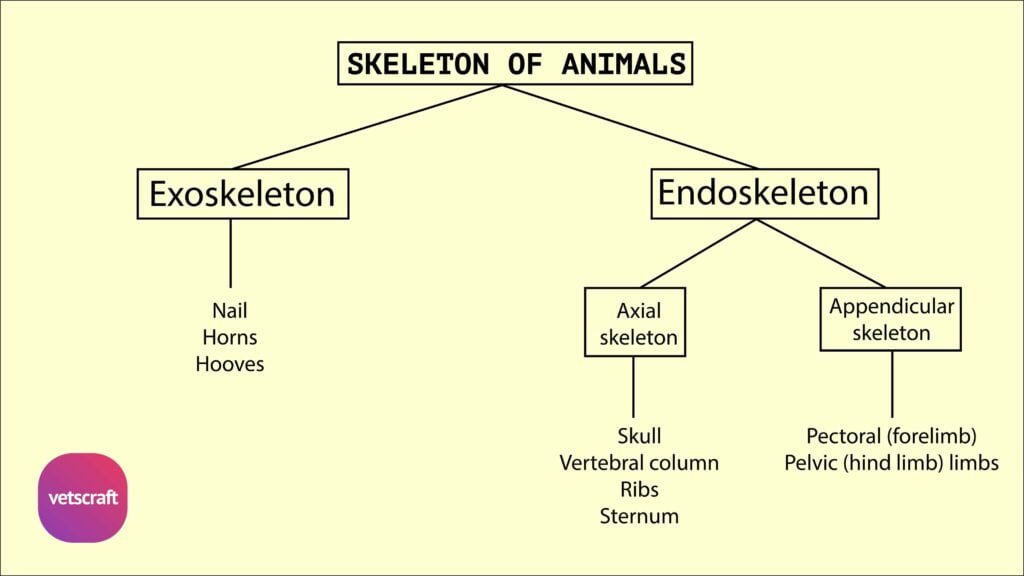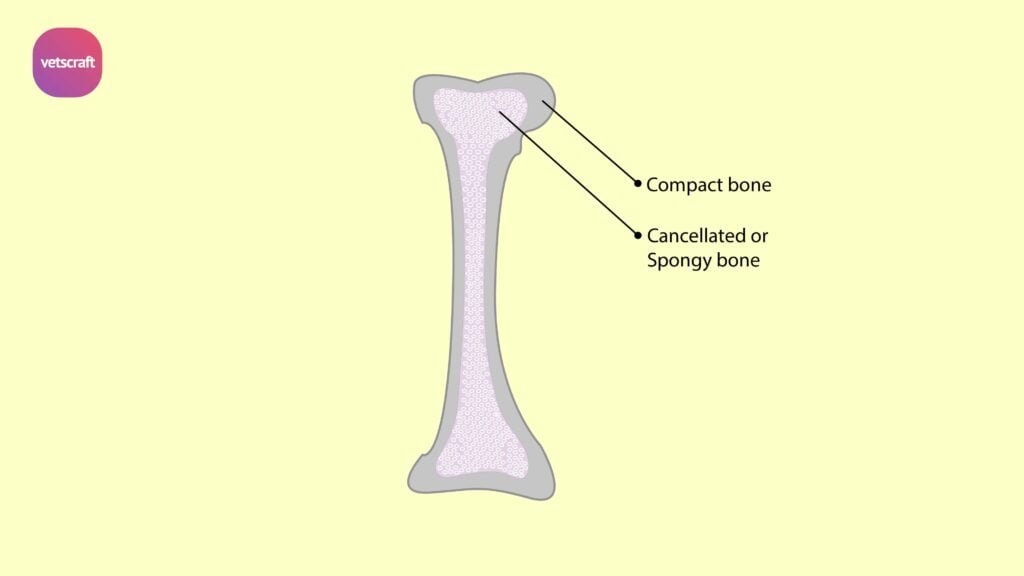TABLE OF CONTENTS
Coverings of Bone: Periosteum and Endosteum
The coverings of bone refer to the two specialized membranes that line the outer and inner surfaces of bones: periosteum and endosteum.

Periosteum
Periosteum is the membrane that covers the outer surface of the bone, except at the articular areas where it is covered by articular cartilage.
The outer layer of bones is protected by the periosteum, a dense fibrous membrane. It consists of two layers: a fibrous outer layer and a cellular inner layer. The fibrous layer is composed of collagen fibres, while the cellular layer contains fibroblasts, osteoblasts, and osteoclasts.
In veterinary anatomy, the periosteum performs several vital functions. It serves as an attachment point for ligaments and tendons, provides protection for the underlying bone, and plays a crucial role in bone growth and repair. Additionally, the periosteum contains blood vessels and nerves that supply nutrients and innervate the bone.
The periosteum consists of an outer protective fibrous layer and an inner cellular osteogenic layer.
Endosteum
Endosteum is a thin membrane lining the medullary cavity (contains bone marrow) and larger Haversian canals. It is also called the medullary membrane.
A delicate, thin membrane called the endosteum covers the inside of bones. Mostly osteoprogenitor cells and osteoblasts make up its single layer of cells. The remodelling and expansion of bone tissue depend heavily on the endosteum.
It contributes to the formation of new bone by giving osteoblasts a surface on which to work and deposit new bone matrix. Osteoclasts, specialised cells in charge of bone resorption, are also present. Additionally, the endosteum participates in the transfer of nutrients and minerals from the bone to the bone marrow cavity, which helps to maintain the overall homeostasis of the skeletal system.
Both the periosteum and endosteum play crucial roles in bone development, repair, and remodeling. While the periosteum supports external growth and fracture healing, the endosteum is vital for internal remodeling and metabolic activities, helping maintain bone strength and mineral balance throughout the animal’s life.

